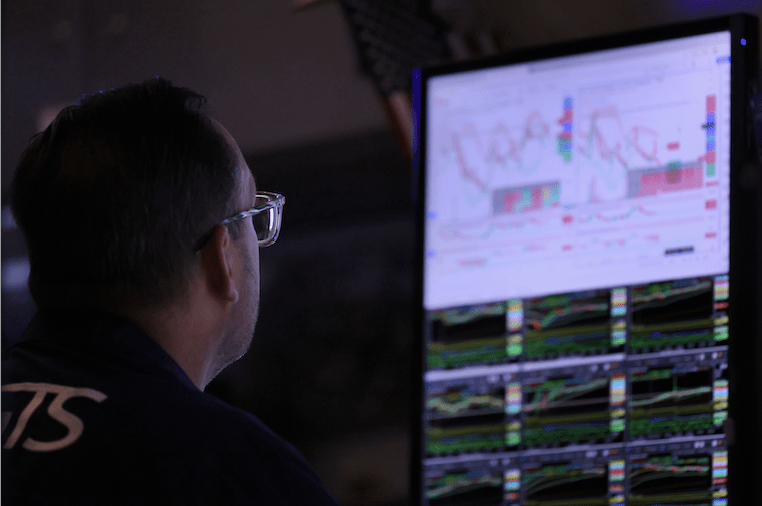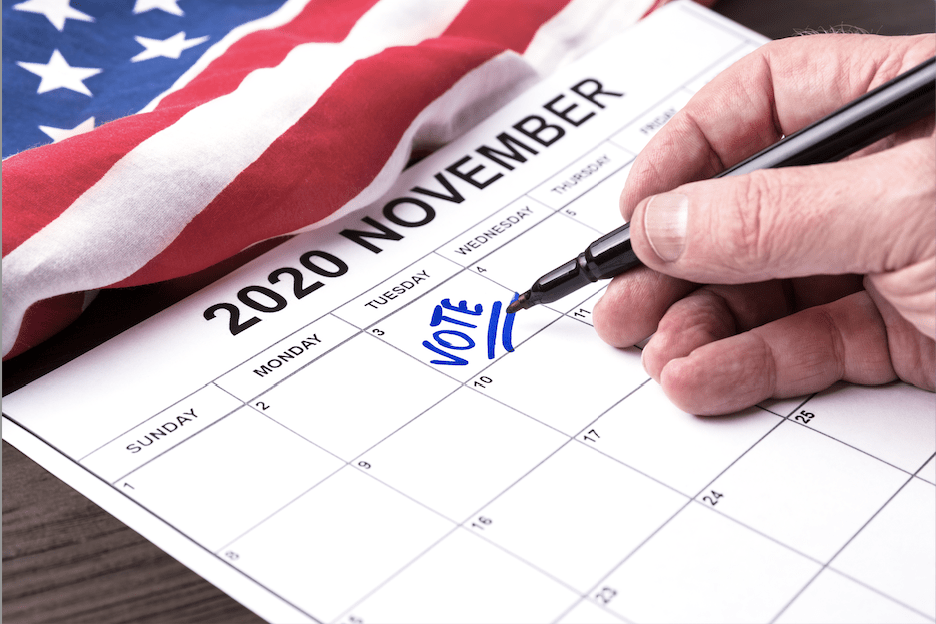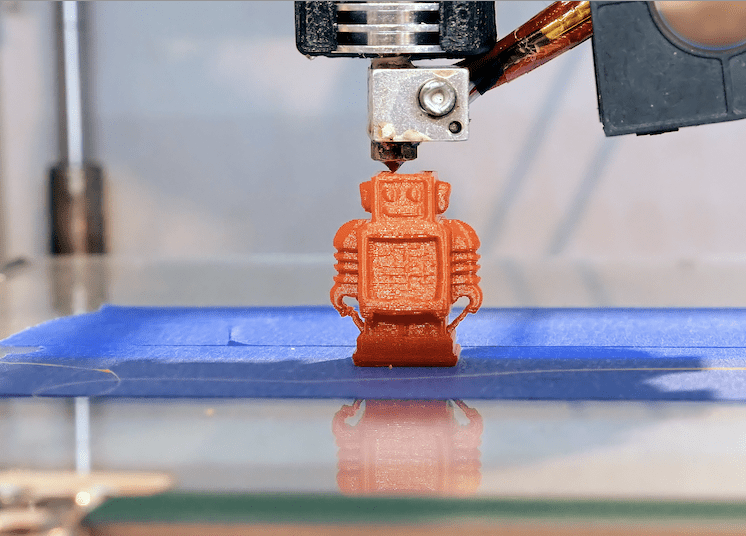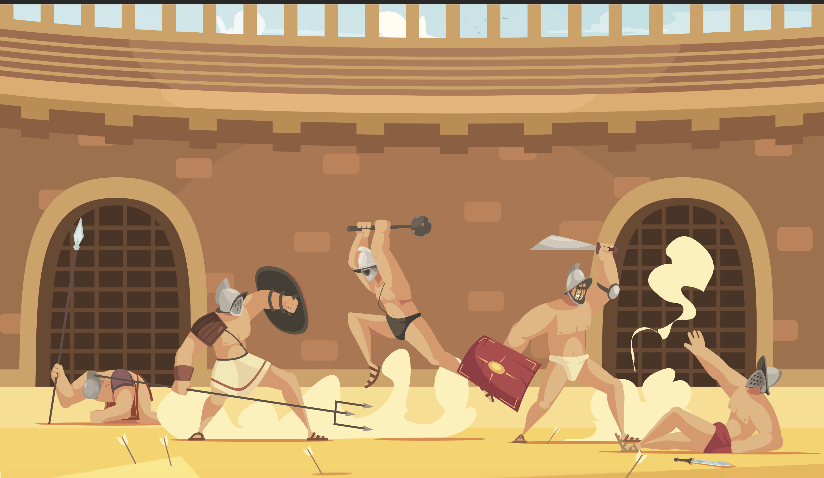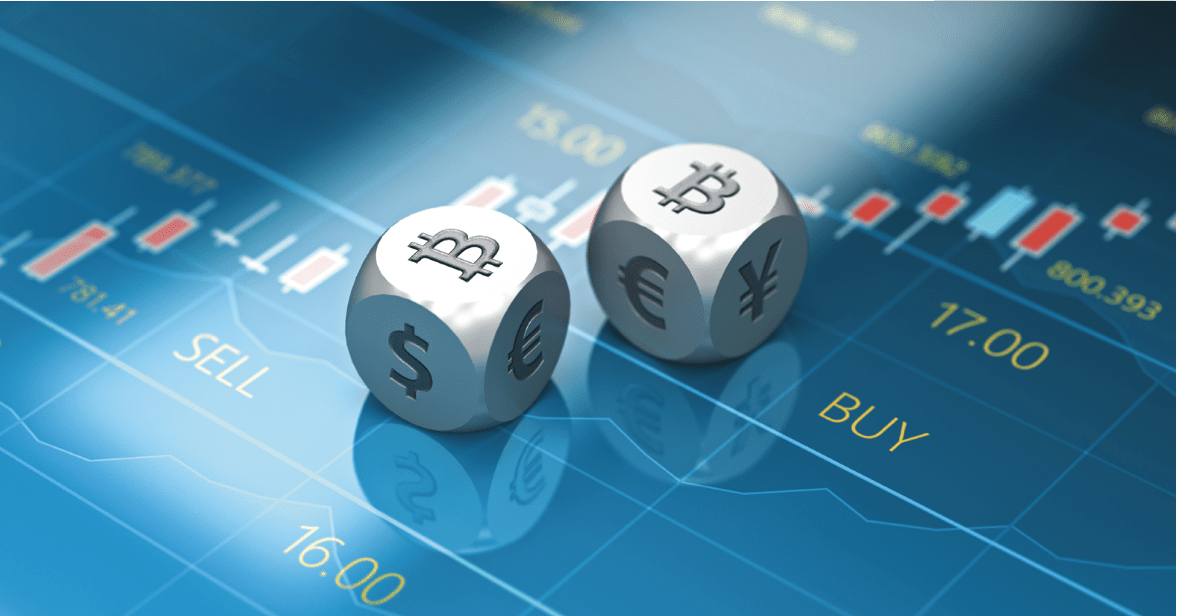The Stock Market is Apolitical
A casual observer might assume that who wins or loses the presidency would have a profound effect on both the economy and the stock market, but that’s not the case. History has shown presidents are the unwitting beneficiaries of economic good times (such as Bill Clinton in the 1990s) or unfortunate scapegoats during severe downturns (such as Herbert Hoover at the start of the Great Depression).

Clinton didn’t singlehandedly create prosperity any more than Hoover was responsible for calamity, but the public tends to attach the ups and downs of the economy (and the markets) to the occupant of the White House at the time.
Sometimes, however, an election marks an inflection point in the nation’s mood and, thus, its economic activity. In the accompanying charts, a red arrow indicates approximately when a particular presidential election was held. All of the charts contain the germane portion of the Dow Jones Industrial Average from just before the election to the next important pivot point in the market, encapsulating the broad reaction of the nation’s economy to its new leadership.
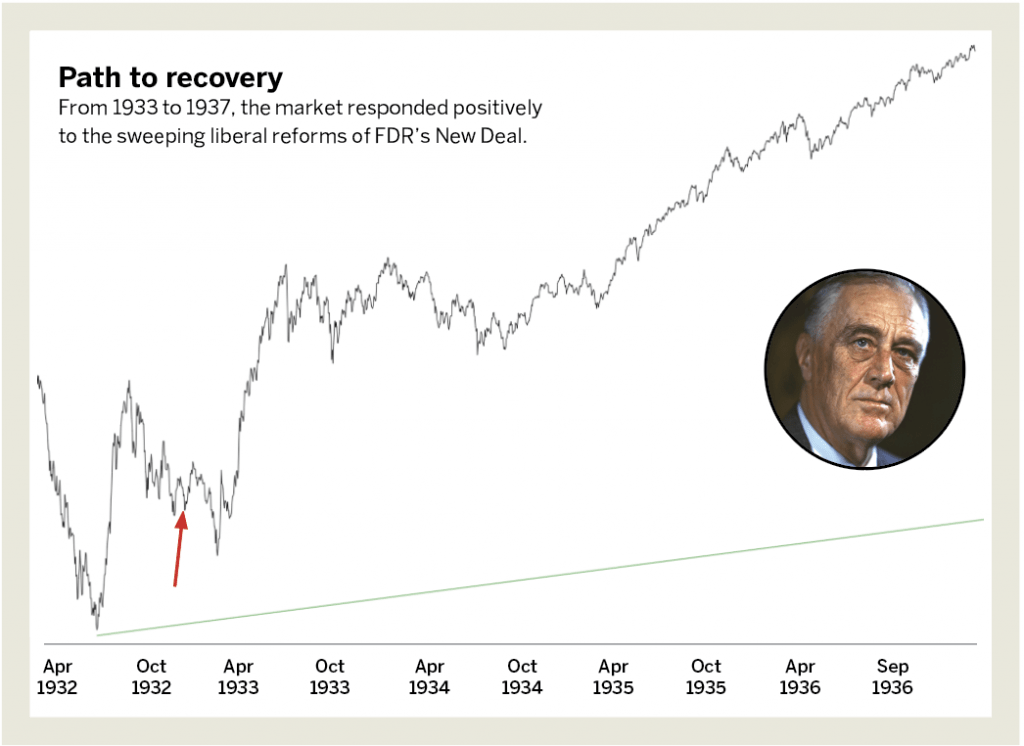
A history of apathy
In the 1920s, the Warren Harding administration—a notoriously corrupt period of D.C. history—was cut short by Harding’s death. His Vice President, the taciturn Calvin Coolidge, served the remainder of Harding’s term and won the election in his own right in 1924.
Coolidge and Harding both embraced a “hands-off” approach to business, and Coolidge’s aggressive reductions in taxes were part of the reason the 1920s were such a bonanza for the stock market. Coolidge’s best-known quote is “The business of America is business,” and he enjoyed tremendous popularity throughout the 1920s because of the nation’s prosperity. But Coolidge’s successor, Herbert Hoover, would find himself in much different circumstances because the Great Depression plunged the nation into darkness during his first year in office.

Nothing to fear
The Great Depression, which gripped the nation in a stranglehold in late 1929, ground away through 1930, 1931 and 1932. Although no one could have known it at the time, the market finally hit its ultimate low on July 8, 1932, at the nearly inconceivable price of 40.60. (The Dow 30 was about 750 times higher than that in February of 2020.)
In the midst of a worldwide depression, Franklin Roosevelt campaigned successfully against the incumbent Herbert Hoover. FDR won in a landslide with 472 Electoral College votes against Hoover’s mere 59. It was a stunningly lopsided election and a humiliating coda for the Hoover administration.
But FDR’s victory didn’t cause the market to roar higher right away. Back then, the president did not take office until five months after the election. The market continued to fall after the votes were counted. When FDR was sworn in he immediately took dramatic actions, such as declaring a bank holiday and outlawing the possession of gold.
The stock market would enjoy a gain of about 300% from March 1933 until June 1937, when a “second wave” hit the economy and the market. The stock market would not push above 1937 levels for almost a decade, but the period from 1933 to 1937 demonstrated that the market responded positively to the radical reforms FDR executed—to say nothing of the tremendous expansion of the nation’s money supply, which inflated asset prices.
Morning in America
Ronald Reagan campaigned in 1980 for the top office. At that time the nation was weary from the doldrums of the 1970s. His optimistic declarations about American free enterprise and the nation’s potential swept him into office, preventing Jimmy Carter from serving a second term.
In the early 1980s, the stock market was ripe for a rise. It was as recent as August 1979 that Business Week famously made “The Death of Equities” its cover story. Stocks were undervalued, and the combination of historically low valuation multiples and a decade of nearly uninterrupted growth gave Reagan tremendous economic tailwinds.
As the arrow shows on “Ups and downs,” (right), the market tumbled early in Reagan’s first term, as the Fed sent interest rates sky-high to stop inflation. Once the economic pain subsided, however, the market ascended powerfully from 1982 through 1987, only to be violently derailed by the October 1987 crash. In hindsight, the crash amounted to little more than a blip over the long haul, but at the time some observers expressed serious concern that America was heading into another version of the 1930s Depression.
“W.” goes to war
The examples provided so far center on presidents who had the positive backdrop of a surging stock market during most of their tenure. But look at George W. Bush, who came into office on the heels of one of the most spectacular run-ups in equities ever. Although tech stocks had already fallen precipitously, the components of the Dow 30 were holding up relatively well, spending most of 2000 range-bound. However, from Bush’s election late in 2000 through October 2002, the Dow dropped from about 11,000 to nearly 7,100, losing more than one-third of its value.
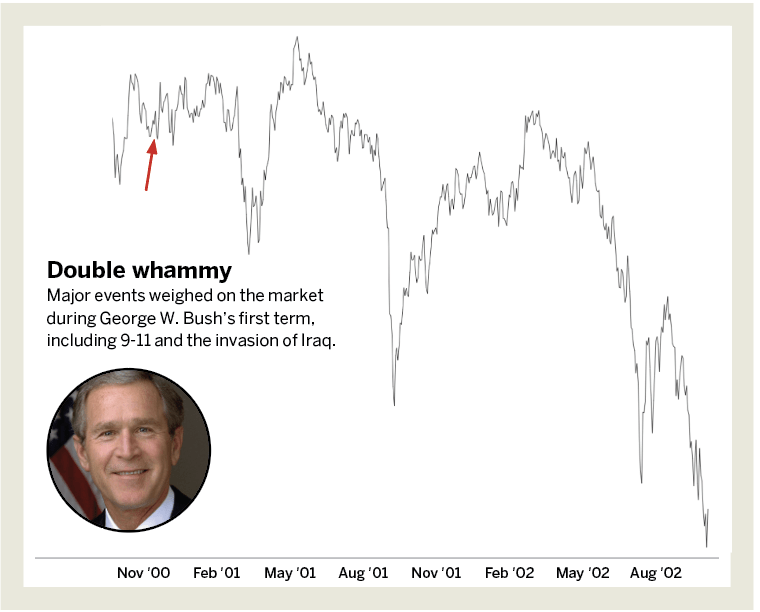
A number of major events weighed on the market, including a weakening economy somewhat hung over from the excesses of the late 1990s, and the terrorist attacks of September 2001. Luckily for President Bush, his bid for re-election didn’t take place in late 2002 when the market was bottoming. Instead, the Dow was almost back up to 11,000 by election time in 2004, and he won a second term.
The Great Recession
The bear market of 2007-2008 was far broader than the one in 2000-2002. The most severe damage from the 2000-2002 bear market was in tech stocks, some of which were wiped out completely. However, the financial damage of the 2007-2008 market drop was more substantial both in absolute dollar terms and the number of sectors adversely affected.
Barack Obama, a young and relatively unknown politician in 2008, captured the public’s imagination as the country was grappling with financial crisis. He handily beat his opponent—365 Electoral College votes versus John McCain’s 173—but concerns about his progressive politics caused the already-weak stock market to sink even further. As with FDR, the stock market bottomed late in the winter of Obama’s first term, only a couple of months after his inauguration. What followed was a bull market that persisted until early this year, the longest in history.
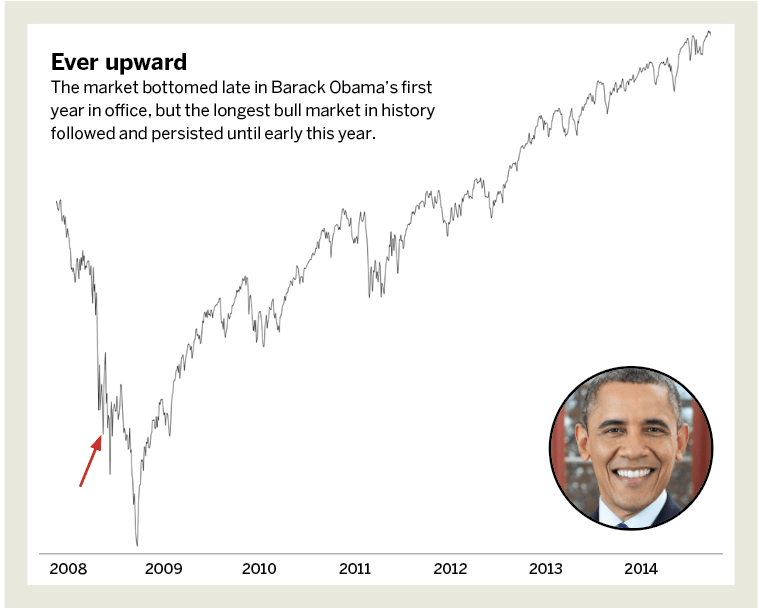
What comes next?
Any trader would understandably want to know the probabilities of who is going to win the presidential election on Nov. 3, and what it will mean for the markets.
Investors generally assume a Trump victory would boost the stock market because of continued pro-business, low-tax policies, while a Biden win would lower stock prices because of the prospect of higher taxes and increased public spending.
Recall, however, what happened on the evening of the election in 2016. The E-Mini S&P was sailing along smoothly and was modestly in the green until the shocking news hit that Trump was, in fact, the winner. The ES and Nasdaq both went limit-down. The market seemed to think declaring this unorthodox victory would mean disaster. But the Dow soon soared to almost double its election night low.
So don’t expect anything startling late on Tuesday night. Elections can indeed become major inflection points, but the preponderance of the market’s moves take years—even on the heels of an important election. It will probably require weeks, or even months, to discern a general trend.
Tim Knight has been using technical analysis to trade the markets for 30 years. He hosts Trading the Close daily on the tastytrade network and offers free access to his charting platform at slopecharts.com.








